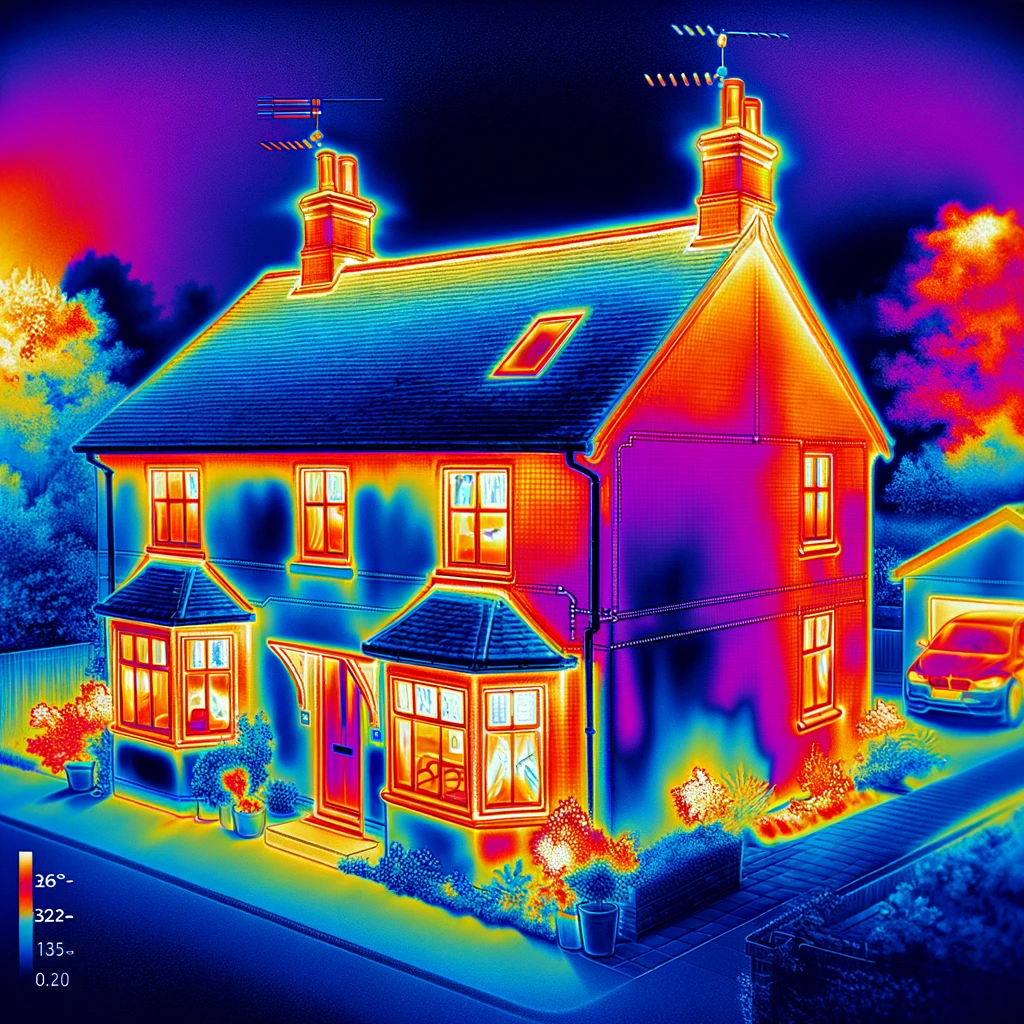
As homeowners, we're always looking for ways to make our homes more comfortable, energy-efficient, and safe. One innovative technology that is becoming increasingly popular for home assessments is thermal imaging. But what exactly is thermal imaging, and how can it help you improve your home? Let's dive in and explore this fascinating tool in a way that's easy to understand.
What is Thermal Imaging?
Thermal imaging, also known as infrared imaging, is a technique that uses special cameras to detect heat energy emitted from an object or area. These cameras don't see light as our eyes do. Instead, they pick up heat — or infrared energy — and translate it into a visual image. These images display varying degrees of heat using different colours. Typically, warmer areas are shown in red or orange tones, while cooler areas are depicted in blues and purples.
How Does Thermal Imaging Work in Homes?
When applied to a house, thermal imaging cameras reveal variations in temperature across the structure. This is particularly useful because it can uncover issues that are invisible to the naked eye. Here are some ways thermal imaging can be beneficial:
- Identifying Insulation Problems: Thermal images can show where heat is escaping from your home, which often indicates inadequate or missing insulation. This can be in the walls, around windows and doors, or in the roof.
- Detecting Moisture Issues: Wet areas tend to be cooler than their surroundings. Thermal imaging can pinpoint potential moisture problems, which can lead to mold or structural damage if not addressed.
- Locating Air Leaks: Drafty areas in the house can make heating and cooling systems less efficient. A thermal image can show where these drafts are coming from, allowing for proper sealing.
- Finding Electrical Faults: Overheating electrical systems can pose a fire risk. Thermal imaging can highlight these hotspots before they become dangerous.
Why is Thermal Imaging Useful for Home Improvements?
Understanding the thermal profile of your home can be a game-changer for several reasons:
- Energy Efficiency: By identifying areas where heat is lost, you can take steps to insulate and seal your home more effectively. This can lead to significant savings on energy bills as your heating and cooling systems won't have to work as hard to maintain a comfortable temperature.
- Cost-Effective Maintenance: Thermal imaging helps you prioritize home improvements. By fixing the most significant issues first, like a poorly insulated attic or a hidden water leak, you can avoid more costly repairs down the line.
- Enhanced Comfort: Addressing the issues identified in a thermal image can lead to a more uniformly heated and cooled home, eliminating cold spots and improving overall comfort.
- Preventative Care: Regular thermal imaging can track the health of your home over time. Catching problems early can prevent extensive damage and maintain the value of your property.
What Does a Thermal Imaging Report Look Like?
After a professional conducts a thermal imaging assessment of your home, you'll receive a detailed report. This report includes the thermal images themselves, each showing different parts of your house in various colours based on temperature. Alongside these images, you'll often find an expert analysis explaining what the colours mean and where potential issues may lie. The report will also typically offer recommendations for improvements, helping you to make informed decisions about home maintenance and upgrades.
In Conclusion
Thermal imaging is more than just a high-tech gadget; it's a practical tool that offers real benefits for homeowners. By providing a clear picture of where your home is losing heat or facing other issues, it empowers you to make smart, effective improvements. In the long run, this can save money, enhance comfort, and even contribute to a healthier living environment. If you're interested in understanding the hidden aspects of your home's efficiency and safety, considering a thermal imaging assessment might be a great next step.